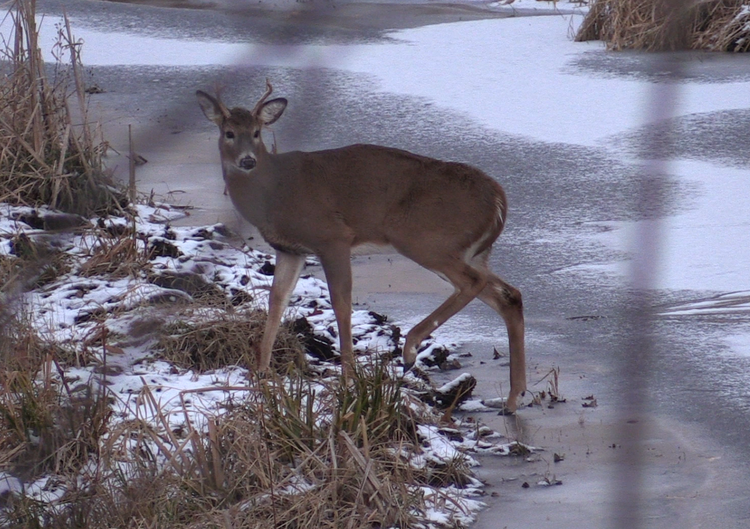The Sound of Silence - Late Season Hunting
Late season can mean many things depending on where you live in the country. In the Midwest we shuffle in the shorter days and cold North winds that create a much different environment for the hunter and the prey. I often wonder what it must be like to survive and sustain in subzero temperatures like the majestic whitetails we chase.
Getting out in the cold can test one’s physical and mental limits but can be very rewarding as it requires focus in your preparation, approach, and timing.
The cold of winter brings a crisp silence to the outdoors where every movement seems to echo across the landscape. Whether you're still chasing to fill your buck tag, working to put meat on the table, or just continuing to indulge in the natural world God has provided for us, there are some key tactics during late season that can keep you in the deer.
Stay Mobile
Mobile hunting can be a very critical component to success in the late season. Deer often begin to congregate in specific areas based on adjacent food sources and security of the elements. Quite often as a hunter you are either "in the deer" or "out of the deer", continuing to move your sets from hunt to hunt based on fresh tracks, sightings, changes in bedding, and alternate food sources can be key in locating the herd and securing your success.
Bedding
Bedding often changes in the late season as snow and ice drive deer out of traditional bedding areas and allow more predators in. During this time of year I see deer shift into areas that have protection from the wind, heavy snowfall and ice, access to alternate food sources, and exposure to the rising and falling sun. Deer absorb sunlight into their coats and utilize their fat stores to bed down in secluded areas for days to avoid the harsh conditions of winter. Pockets in cattails, red brush, conifers, and thick hillsides can provide the perfect areas for deer to hold up during harsh winter conditions. If you can find these areas and get close, you're typically in the game for the short movements they make in daylight.
Tracking and Sign
As a hunter a fresh snowfall can be a huge advantage for putting the pieces of the puzzle together between secure bedding and food sources. Mid morning after an evening snowfall I like to go for a walk cutting across tracks concentrating on the quantity, size, gate, and direction of the tracks. Tracks not only can give me insight into the size of the deer in the areas, but the number of deer in an area along with where they are heading to bed down for the evening. I focus on locating the well traveled trails in the snow, then set-up based on “quiet access”, window, and travel direction out of bedding. I’ve seen travel direction be dictated by adjacent food sources as much as a half mile away. Having a clear picture of how deer travel through an area can be key to your success.
Access & Set-Up
As I mentioned early, the crisp cold of the winter can make sound seem amplified as you creep through the woods. I take time to assess my access in-order to avoid alerting deer of my presence due to breaking ice, and crunching snow. Take your time setting up with small movements, and precise placement of your gear. Practicing your accent with heavier gloves and clothing can be key in your late season success. On my way in I often dress very light, carrying my warmer gear on my back with my stand and sticks. This allows me to move more easily through the snow reducing the amount of sweat I produce while walking in. Moisture can make you very cold in sub-zero conditions, where quite often you need to be on-stand and ready in those last 15 minutes of daylight. I like using a hang-on stand and climbing sticks because it allows me to make precise and simple movements upon setting up while staying quiet and still in the crisp winter air.
Food Sources
Deer can be much less active in the winter, at times dropping their metabolism to adjust for the lack of abundant food sources. Deer can survive the winter on a steady diet of remaining buds, twigs, stems, and small grasses. Deer are primarily browsers not grazers, so they will seek food sources both above and below the snow. In the absence of crop fields or food plots small conifers, cattails, red brush stems & buds, buckthorn, and saplings can all provide ample sustenance browsing for deer in the winter. Developing clear cuts can provide a lot of sapling browse as well. As the temperatures dip below zero deer will often move early close to bedding areas to begin browsing for sustenance. If you can locate these areas in or adjacent to bedding you will up your odds of locating those secluded giants in the cold.
Whatever your after I hope you get out and enjoy what the outdoors have to offer in the late season. Challenging yourself physically and mentally for the pursuit of whitetails can be a rewarding release from the day to day comforts of modern life.

